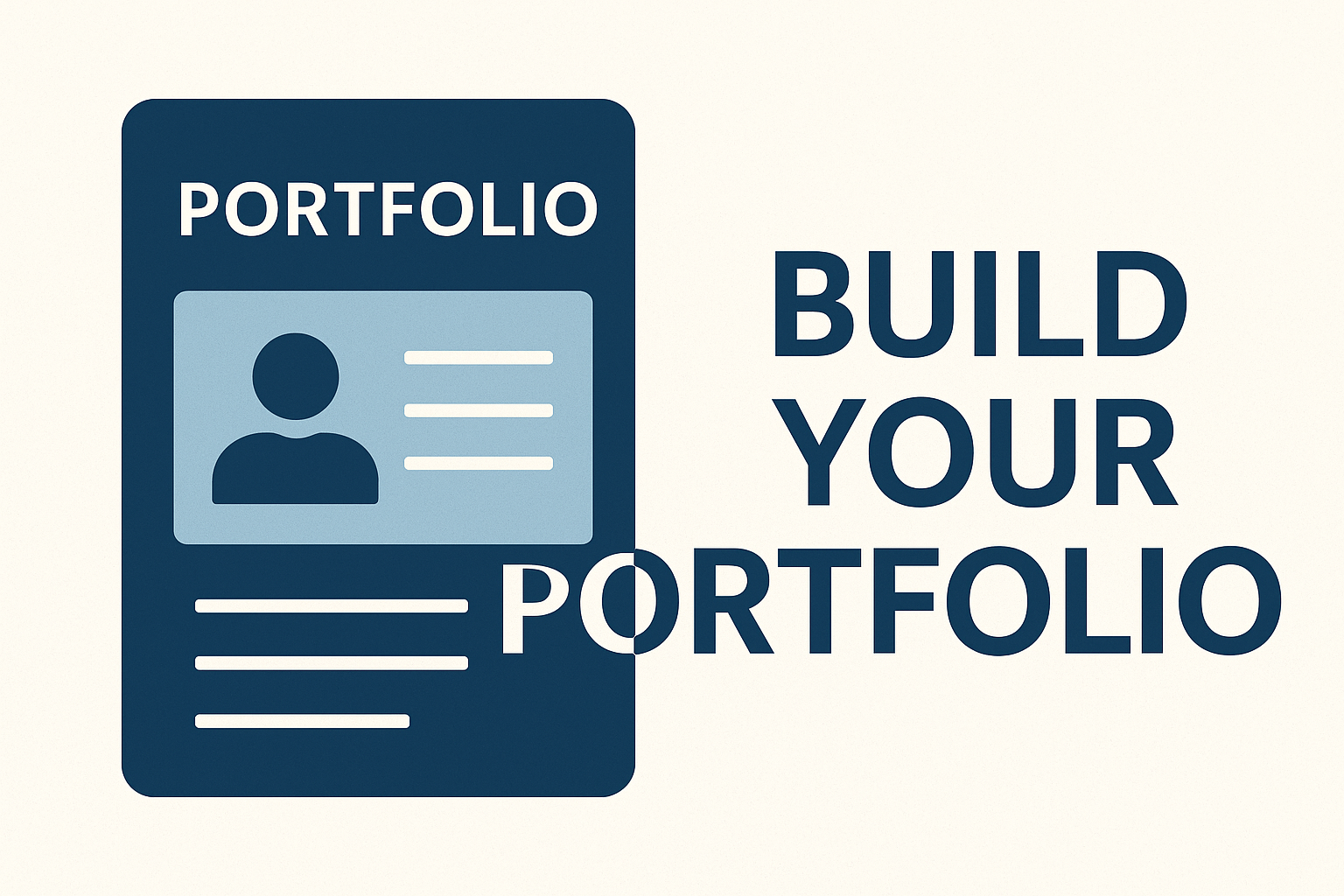Build a Portfolio That Stands Out

In today’s competitive job market, a résumé alone isn’t always enough to stand out. Recruiters, hiring managers, and even clients want to see evidence of your skills. That’s where a professional portfolio comes in.
A strong portfolio does more than list achievements — it tells your story, highlights your best work, and demonstrates the value you bring. Whether you’re a developer, designer, writer, marketer, or manager, a portfolio can help you land more interviews and opportunities.
1. Why You Need a Portfolio in 2025
Portfolios are no longer just for creative fields. Employers across industries expect proof of skills and real-world results.
- 📂 Developers showcase GitHub repositories, apps, or case studies.
- 🖌️ Designers highlight visual projects, UI mockups, or branding work.
- ✍️ Writers include articles, reports, or campaign copy.
- 📊 Marketers display campaign analytics, growth charts, or strategy decks.
- 👔 Business professionals add project outcomes, process improvements, or leadership stories.
In short, a portfolio turns your claims into credibility.
2. Choose the Right Platform
Your portfolio doesn’t have to be fancy, but it should be professional and easy to navigate.
- 🌐 Personal website: Best for full control and branding.
- 💼 LinkedIn: Use the “Featured” section for projects, posts, and media.
- 📂 Specialized platforms: Behance (design), GitHub (development), Medium (writing).
- 📧 PDF portfolio: Useful for quick sharing, though less dynamic.
Pro tip: If possible, host your portfolio on your own domain. It looks professional and gives you control over presentation.
3. What to Include in a Strong Portfolio
A great portfolio doesn’t include everything you’ve ever done. It focuses on the most relevant and impactful work. Here’s what to include:
- About Me: A short introduction with your skills, interests, and values.
- Case Studies: Highlight 3–5 detailed projects with background, process, and outcomes.
- Work Samples: Screenshots, links, or files of your best work.
- Testimonials: Client or colleague feedback adds credibility.
- Resume Download: Optional but useful for quick access.
Less is more: focus on projects that showcase your strengths and results.
4. Tell Stories, Not Just Tasks
Anyone can say, “I built a website” or “I managed a campaign.” What sets you apart is storytelling.
Use the STAR method (Situation, Task, Action, Result) to frame your work:
- Situation: What challenge or need existed?
- Task: What was your role?
- Action: What steps did you take?
- Result: What impact did it make? (Use numbers when possible.)
This makes your portfolio memorable and demonstrates value.
5. Keep It Professional and Updated
Your portfolio is a living document. Outdated work or broken links can hurt your credibility.
- 🔄 Update at least once a quarter.
- ✅ Remove irrelevant or low-quality work.
- 📅 Keep dates visible to show recent activity.
6. Design Matters (But Don’t Overdo It)
Good design supports your work — it doesn’t distract from it. Keep your portfolio clean, easy to navigate, and mobile-friendly.
Checklist:
- ✔ Clear headings and sections.
- ✔ Visual consistency (colors, fonts, spacing).
- ✔ Responsive layout (works on phones and tablets).
A simple, polished design is more impressive than a flashy but confusing layout.
7. Showcase Soft Skills Too
Hard skills are important, but employers also look for problem-solving, collaboration, and leadership. Your portfolio can demonstrate these through:
- 💡 Describing how you worked with a team.
- 💡 Showing how you handled challenges.
- 💡 Including leadership or mentoring experiences.
8. Common Portfolio Mistakes to Avoid
- 🚫 Including every project you’ve ever worked on.
- 🚫 Using only visuals without context.
- 🚫 Neglecting mobile users (most recruiters browse on phones).
- 🚫 Forgetting to include contact information.
Action Plan to Build Your Portfolio
- 📌 Pick your platform (website, LinkedIn, PDF).
- 📌 Select 3–5 strong projects.
- 📌 Write case studies with STAR method.
- 📌 Add visuals and results data.
- 📌 Polish design and layout.
- 📌 Update regularly with new work.
Follow these steps, and your portfolio will position you as a top candidate in your field.
